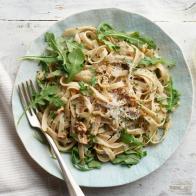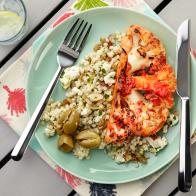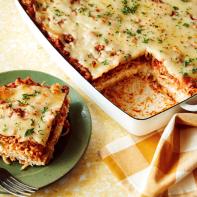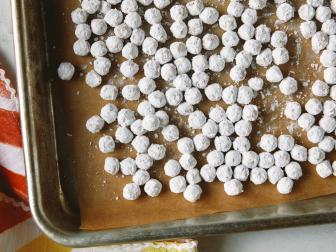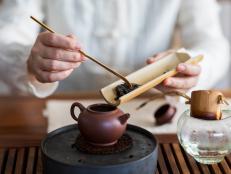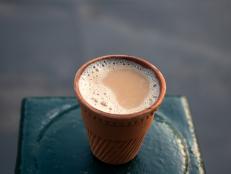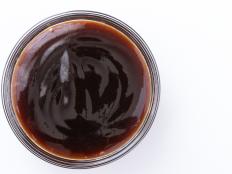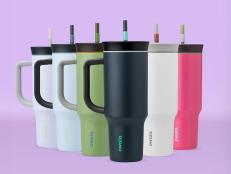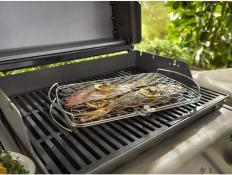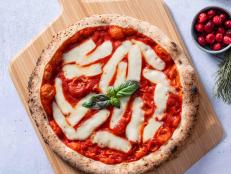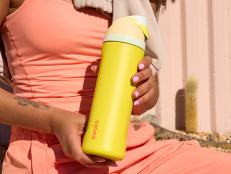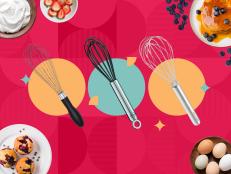What Is Boba?
A guide to everything you need to know.
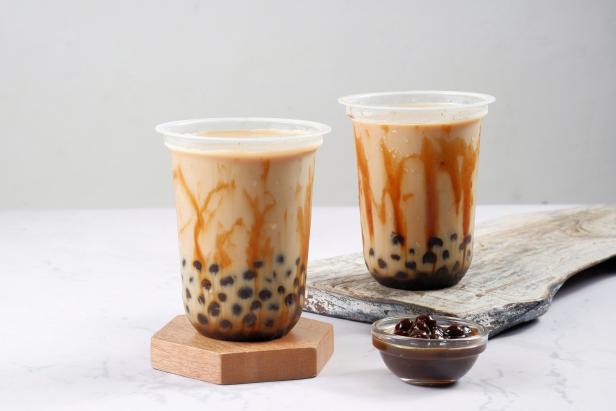
Edy Gunawan/Getty Images
By Clarissa Wei for Food Network Kitchen
Clarissa Wei is a freelance journalist based in Taipei.
Boba made its debut in the States around the late 1990s, when a number of Taiwanese tea chains opened up shop and started selling sugary brown chewy balls in sweet milk tea. By the 2000s, it had become a mainstay of Asian-American culture — a quick, affordable beverage embraced by the diaspora. Today, it is ubiquitous around the world and there are boba tea shops across the globe, from Dubai to Stockholm.
What Is Boba?
The word boba technically refers to the bite-sized, chewy tapioca pearls found in bubble milk tea, though sometimes people use it to refer to the entire drink itself.
Boba comes from Taiwan and was invented in the 1980s either by a tea shop in the city of Taichung or Tainan on the west coast of the island. While the exact city and shop where it emerged is fiercely contested, the ingredient actually has its roots in traditional Taiwanese folk remedies. To combat heat stroke, agrarian households used to make miniature pearls out of sweet potato or tapioca starch and plop them in sugar water. This was said to help cook the body down. The pearls back then were bead-sized and transparent. In the 1980s, the pearls were enlarged, rolled together with brown sugar (which is what gives it its color) and added to milk tea. Today boba — also referred to as tapioca pearls or the bubbles in bubble milk tea — is almost always made up with a combination of starches.
What Is Boba Made Of?
Homemade Brown Sugar Boba
If you love the boba tea shops popping up and want to try making them at home, these tapioca bubbles will taste better that anything you can buy. They're a labor of love, so when it comes time to roll the little boba, hop on a stool or grab a friend to help you out. You’ll have enough to make 8 glasses of your very own homemade bubble tea.
Boba is mostly made out of the starch of tapioca, which is derived from the cassava root — a hearty, tropical tuber brought over to Asia via South America by maritime trade routes in the late 18th century. When mixed with water, tapioca starch has a tender and supple texture, which makes it easy to chew, but it is also often mixed together with sweet potato starch, which is more firm and gives the final boba a more durable structure. The dark caramel-brown hue of boba comes from brown sugar, which is rolled in together with the starches.
A caveat: Freshly made boba only has a shelf life of one to two days. But most boba is made in Taiwan and then exported to boba tea shops or supermarkets around the world without refrigeration. To make the product shelf stable, the majority of boba on the market includes additives.
How Is Boba Used?
Boba typically is used in beverages. To cook the boba, simmer the pearls in water for up to an hour, where they will turn from faint light beige to a deep caramelized brown. They are done cooking when soft and supple. Strain them and add them immediately to warm sugar water. Boba should never be refrigerated or stored overnight; the pearls tend to stiffen up in the fridge.
Today, there are numerous of quirky ways to use boba. Boba can be put into popsicles, used as a topping for shaved ice, or even put on top of a dessert pizza. The important thing to remember is that the pearls themselves should be served warm.
What Is Boba Tea?
Boba tea refers to the beverage that boba is served in. The early renditions of boba tea were boba submerged in sweetened iced black tea and non-dairy creamer, but today, there are an infinite amount of permutations around the beverage. Milk, creamer or any additional flavorings are completely optional. The tea itself doesn’t even have to be caffeinated. Boba tea tends to be sweetened and iced, and most boba shops around the world allow for customizable sugar and ice levels.
Popular Boba Flavors
Brown Sugar Boba Milk Tea: This is a classic variation. The boba itself is first soaked in a thick toasted brown sugar syrup before being added to milk tea. This is also known as tiger milk tea because of the tiger-like streaks of brown sugar syrup on the glass.
Jasmine Delight Bubble Tea: The joy of boba tea is that any type of tea will do. This rendition uses jasmine tea bags and condensed milk for a refreshing finish.
Strawberry Milk Tea: This is a modern take on bubble tea, but with a delectable syrup made with fresh strawberries and honey. Fruit is a common theme in modern boba culture. In Taiwan, boba shops like working with tropical fruits like passion fruit or mango.
Related Links:
